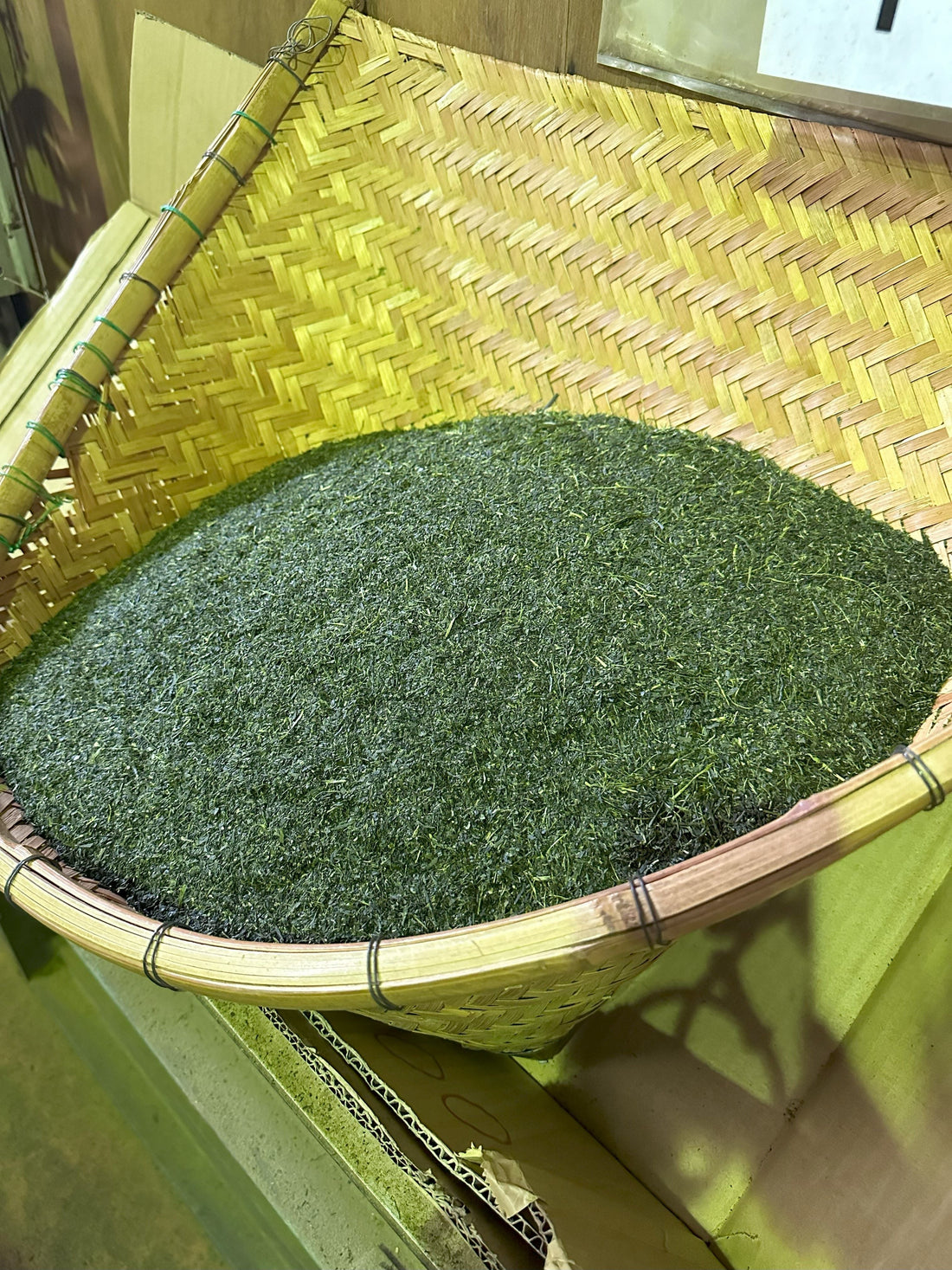
Vol. 2 How Is Japanese Tea Made? From Tea Fields to Teacups — The Process of Steamed Green Tea
Share
The refreshing aroma and clear taste of a cup of Japanese tea—something we often enjoy in our daily moments—are the result of time, care, and meticulous craftsmanship.
Here, let’s trace the journey of mushi-sei ryokucha (steamed green tea), the most common style of Japanese tea, from the field to your teacup.

Cultivation in the Tea Fields
The tea plant (Camellia sinensis), an evergreen of the camellia family, is the source of all Japanese tea. It is cultivated throughout Japan, with major producing regions including Kagoshima, Shizuoka, and Kyoto.
Tea fields stretch out like neatly trimmed green carpets, tended carefully through all seasons. Farmers nurture the soil, manage fertilizers, and protect the plants from pests and disease—all to ensure that tender new buds grow vigorously in spring.

The Harvest Season
The highlight of tea production arrives with the spring harvest.
From late April to May, the first flush of new leaves—known as ichibancha—is especially aromatic and rich in flavor. The harvested portion consists of soft new shoots and the young leaves just below them.
While hand-picking was once the norm, mechanical harvesters are now widely used. Still, the traditional standard of isshin niyō—“one bud, two leaves”—remains key to determining tea quality.
The Unique Japanese Technique of Steaming
Freshly picked tea leaves oxidize quickly, changing in color and flavor like black or oolong tea.
To prevent this, Japanese tea producers developed the distinctive technique of steaming immediately after harvest. By exposing the leaves to hot steam for about 20 seconds, oxidation is halted, locking in the bright green color and fresh, grassy aroma.
This steaming process is what truly defines Japanese green tea.
Rolling and Drying
After steaming, the leaves still contain a great deal of moisture and cannot yet be stored.
They are gently rolled to shape them into fine, needle-like strands while evenly removing moisture from inside the leaves.
Next, warm air is used to dry the tea, enhancing its aroma and shelf life.
The tea at this stage is called aracha—literally “crude tea.”
Finishing and Sorting
Aracha is then refined into the tea we see in shops.
During this finishing stage, stems and fine particles are removed, leaf size is adjusted, and the tea is lightly roasted (hi-iri) to bring out its fragrance.
Depending on the degree of roasting, the flavor changes—teas with a strong hika (toasty aroma) offer a soothing, comforting note.
From Field to Teacup
Finally, the finished tea is packaged, distributed, and reaches our homes.
When the tea is brewed—with care given to water temperature and steeping time—the breeze from the tea fields and the craftsmanship of the growers seem to come alive in each wisp of steam.
At first glance, Japanese tea may seem ordinary, but behind every cup lies a dialogue with nature, scientific precision, and human artistry.
By imagining the journey of the tea leaves—from the fields to your teacup—your everyday teatime may start to feel just a little more special.
